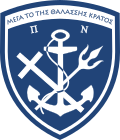 Plotarchis Vlachavas at Rhodes Harbour | |
| Class overview | |
|---|---|
| Builders | CMN Lurssen |
| Operators | |
| Succeeded by | La Combattante III class |
| Built | 1973–1974 |
| In commission | 1973–present |
| Completed | 6 |
| General characteristics | |
| Type | Fast attack craft |
| Displacement |
|
| Length | 47 m (154 ft) |
| Beam | 8 m (26 ft) |
| Draught | 2.1 m (7 ft) |
| Installed power |
|
| Propulsion | Four shafts |
| Speed | 36 knots (67 km/h; 41 mph) (maximum) |
| Range |
|
| Complement | 30 (4 officers) |
| Sensors & processing systems |
|
| Electronic warfare & decoys | Thomson-CSF DR 2000S |
| Armament |
|
The La Combattante II type missile boats are two classes of fast attack craft of the Hellenic Navy. The first group of four were ordered by Greece in September 1972 from France. [1] The vessels had no class name but are referred to by type. A second group of six were purchased in the 1990s from Germany, comprising six Type 148 Tiger-class fast attack craft that were being decommissioned. [2] The class was renamed La Combattante IIa, as with the French-made ships. All the ships were under mid-life updates in 1980s. Two vessels in the class, P-74 and P-75, were fitted with RGM-84 Harpoon anti-ship missiles and a new ESM was fitted after transfer.
